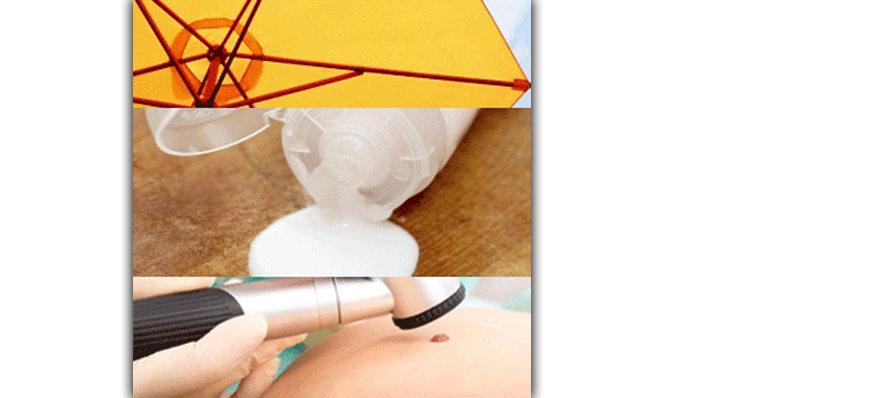Visible Light Photopatch Testing of Common Photocontactants in Female Filipino Adults With and Without Melasma: A Cross-sectional Study. J of Drugs
Verallo-Rowell, VM, Pua JM, Bautista D
PUBLICATION: Dermatol February 2008; 7(2): 149-561.
ABSTRACT
Background: Although consistently associated with sun exposure, melasma is common among sun-shy Filipino women who generally prefer to have lighter skin, use skin lighteners, regularly practice sun avoidance, and are more exposed to indoor lights.
Objective: To determine presence/absence of photocontact dermatitis in melasma/no-melasma patients using photopatch testing (PhPT) with standard photocontactants and an indoor visible light (VL) source.
Design: Cross-sectional study: random population of 40 female patients aged 30-55 years, 20 with and 20 without melasma. The PhPT included 67 photocontactant allergens: 59 from Chemotechnique Diagnostics (24 fragrance, 22 North American photopatch, 13 plants) and 8 cosmetic allergens from Skin Sciences Laboratory Inc. (Pasig, Philippines) in sets of paired test patches. One of the pairs was irradiated with a 500-watt tungsten halogen lamp as the VL source; the other was the nonirradiated control. The standard protocols of the North American Contact Dermatitis Group (NACDG) was used to examine the nonirradiated control patches after 48 and 72 hours, the DAPT (German/Austrian/Swiss Photopatch Study Group) was used to examine the VL-irradiated patches, and both protocols were used to interpret relevance of the readings as to the presence or absence of contact dermatitis (CD) or photocontact dermatitis (PhCD).
Results: Fifty-five percent of patients in the melasma group (N=11/20) had 29 positive ( ) PhPT reactions to VL-irradiated allergens (11 fragrances, 11 North American, 7 plants). In the no-melasma group, none had ( ) PhPT. This association is highly significant (P=0.00 using 2-tailed Fischer’s exact test), such that compared to a (-) PhPT, a ( ) PhPT has 12.67 times more likelihood to develop melasma (P=0.05: 1.402-114). All 29 ( ) PhPT were decrescendo type, replaced by pigmentation observed up to 7 days suggesting phototoxic reactions, and all had ( ) clinical relevance establishing phototoxic low-energy VL-PhCD.
Conclusion: Melasma worsens with sun exposure, but this study shows that the low energy of artificial indoor VL is enough to react with photocontactants followed by a pigmentation response that may account for its clinical appearance as a mostly noninflammatory slowly evolving facial pigmentation.
Verallo-Rowell, VM, Pua JM, Bautista D
PUBLICATION: Dermatol February 2008; 7(2): 149-561.
ABSTRACT
Background: Although consistently associated with sun exposure, melasma is common among sun-shy Filipino women who generally prefer to have lighter skin, use skin lighteners, regularly practice sun avoidance, and are more exposed to indoor lights.
Objective: To determine presence/absence of photocontact dermatitis in melasma/no-melasma patients using photopatch testing (PhPT) with standard photocontactants and an indoor visible light (VL) source.
Design: Cross-sectional study: random population of 40 female patients aged 30-55 years, 20 with and 20 without melasma. The PhPT included 67 photocontactant allergens: 59 from Chemotechnique Diagnostics (24 fragrance, 22 North American photopatch, 13 plants) and 8 cosmetic allergens from Skin Sciences Laboratory Inc. (Pasig, Philippines) in sets of paired test patches. One of the pairs was irradiated with a 500-watt tungsten halogen lamp as the VL source; the other was the nonirradiated control. The standard protocols of the North American Contact Dermatitis Group (NACDG) was used to examine the nonirradiated control patches after 48 and 72 hours, the DAPT (German/Austrian/Swiss Photopatch Study Group) was used to examine the VL-irradiated patches, and both protocols were used to interpret relevance of the readings as to the presence or absence of contact dermatitis (CD) or photocontact dermatitis (PhCD).
Results: Fifty-five percent of patients in the melasma group (N=11/20) had 29 positive ( ) PhPT reactions to VL-irradiated allergens (11 fragrances, 11 North American, 7 plants). In the no-melasma group, none had ( ) PhPT. This association is highly significant (P=0.00 using 2-tailed Fischer’s exact test), such that compared to a (-) PhPT, a ( ) PhPT has 12.67 times more likelihood to develop melasma (P=0.05: 1.402-114). All 29 ( ) PhPT were decrescendo type, replaced by pigmentation observed up to 7 days suggesting phototoxic reactions, and all had ( ) clinical relevance establishing phototoxic low-energy VL-PhCD.
Conclusion: Melasma worsens with sun exposure, but this study shows that the low energy of artificial indoor VL is enough to react with photocontactants followed by a pigmentation response that may account for its clinical appearance as a mostly noninflammatory slowly evolving facial pigmentation.





